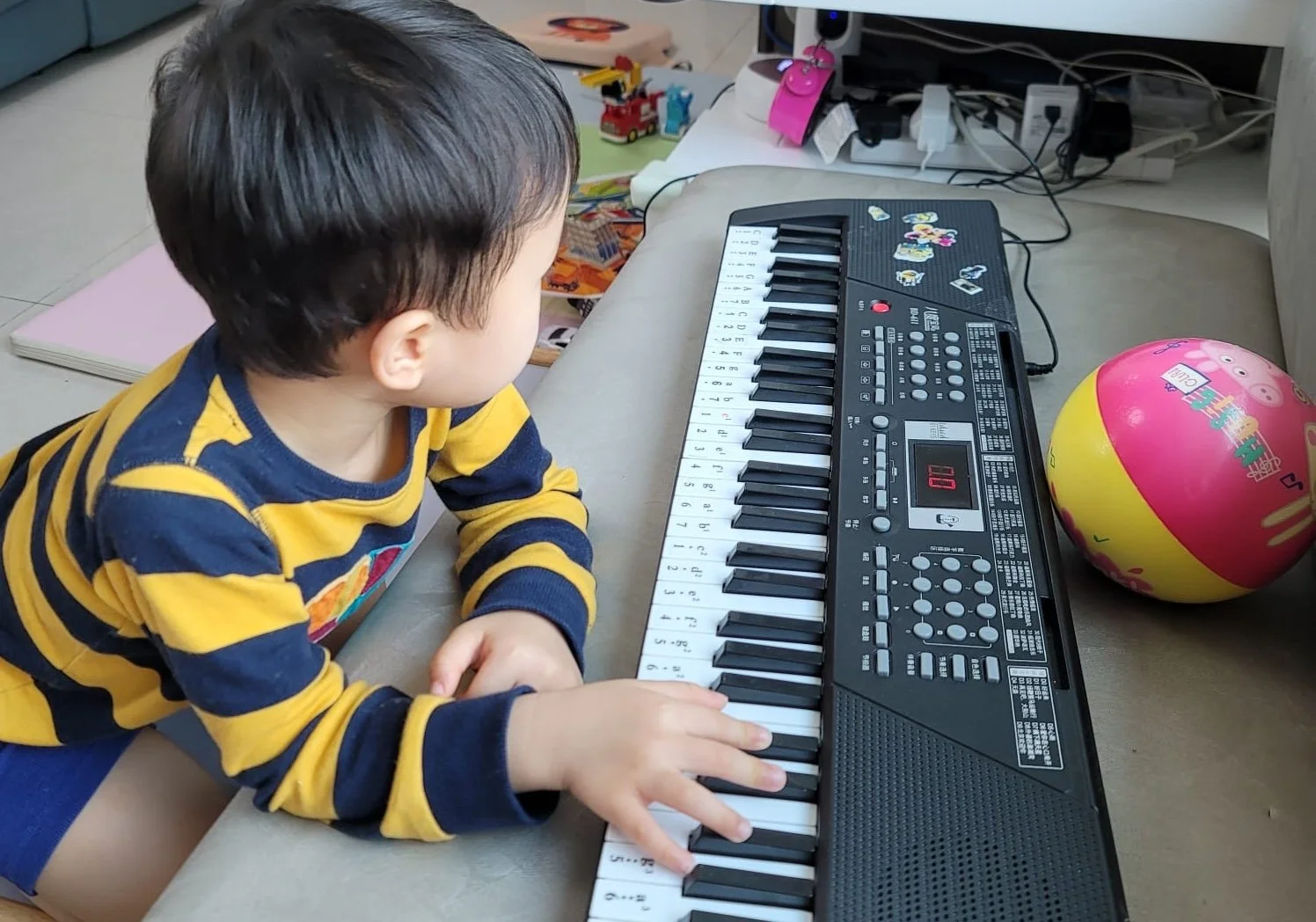What does Music Therapy Do?
-
Music supports transitions by providing structure and cues that help children move smoothly between activities. For example, we use a hello song to begin a session, a pack-away song to signal the end of a task, and a goodbye song to close the session.
-
Music can also enhance performance in self-care tasks by supporting memory retrieval, helping children remember and sequence steps, initiate actions, and follow through with completing the task.
-
Music provides a safe and supportive space for connection and bonding - especially valuable for children who may find emotional expression difficult. Children can engage with music in many ways: verbally or non-verbally, by actively making music, or simply by listening.
Music therapy supports the development of interaction skills such as turn-taking, joint attention, and cooperative play. These skills are naturally encouraged through shared music-making, musical play, and musicking experiences.
-
The elements of music support both co-regulation and self-regulation in children. By adjusting rhythm, tempo, pitch, dynamics, and melody, Registered Music Therapists (RMTs) co-regulate with children and create a safe, responsive space.
These elements allow music to be used creatively and therapeutically - to promote relaxation, calm the nervous system, organise the sensory environment, or increase alertness and engagement.
-
Music is rich in sensory input, engaging multiple senses at once—auditory, visual, tactile, and even vestibular. For example, when playing a drum, a child can hear the sound, see the movement, feel the texture, and experience the vibrations through their body.
Music provides structured sensory input that helps children regulate their arousal levels, process sensory information, and organise their responses to the environment in a safe and enjoyable way.
Music therapy is the therapeutic use of music that targets the brain, mind, and body to support healing and development. It is an engaging and motivating approach that helps children achieve their therapeutic goals.
Music connects people, and music therapy influences cognition, behaviour, and physical function. It supports emotional regulation, facilitates communication, and promotes greater participation in activities.
For example, music therapy can help children develop communication skills through singing and call-and-response games, improve fine and gross motor skills by playing instruments or moving to music, and support emotional regulation through music-making and entrainment.





